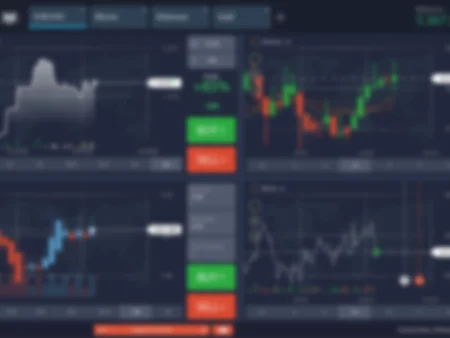A Complete Guide to Scalping Trading Strategy: Tips, Pros, and Cons
In the fast-paced world of financial markets, traders constantly seek strategies that allow them to capitalize on small price movements and profit from market volatility. One of the most popular techniques among short-term traders is scalping—an aggressive trading strategy that involves making numerous trades within a day to capture tiny price movements.
Scalping can be highly rewarding for those who master it, but it’s also a demanding strategy that requires precision, quick decision-making, and discipline. In this article, we’ll explore what scalping is, the advantages and disadvantages of this strategy, and some useful tips to help you succeed as a scalper.
What is Scalping?
Scalping is a trading strategy that involves buying and selling financial instruments, such as stocks, forex pairs, or cryptocurrencies, over very short time frames to capture small price movements. Unlike swing trading or long-term investing, scalping focuses on micro moves in the market, typically holding trades for just seconds or minutes.
Scalpers aim to make a profit by executing dozens or even hundreds of trades in a single day, with each trade earning a small profit. The idea is that these small gains add up over time, creating significant cumulative profits.
Key Features of Scalping:
- High Trade Frequency: Scalpers often place many trades in a day, sometimes trading every few minutes.
- Short Holding Periods: Trades are held for a very short time, typically from a few seconds to a few minutes.
- Small Price Targets: Scalpers aim for small price movements, often just a few pips in forex or a few cents in stocks.
- Leverage: Scalping often involves the use of leverage to maximize profits from small price moves.
- Tight Stop-Losses: Risk management is critical in scalping, and traders typically set tight stop-loss orders to prevent large losses.
Pros of Scalping Strategy
While scalping is a challenging approach, it comes with several benefits that make it attractive to many traders:
1. Quick Profits
One of the biggest advantages of scalping is the speed at which profits can be realized. Scalpers don’t have to wait for large market moves or hold positions overnight. Instead, they can execute multiple trades throughout the day and take advantage of even the smallest market fluctuations. This rapid-fire approach can be exciting and rewarding when executed correctly.
2. Low Exposure to Market Risk
Since scalpers hold positions for a very short time, they are less exposed to market risk and price fluctuations that can occur overnight or during major news events. Unlike swing or position traders who may hold trades for days or weeks, scalpers avoid much of the uncertainty and volatility that can arise from macroeconomic announcements or geopolitical events.
3. Consistent Opportunities
Scalping is particularly appealing in highly liquid markets such as forex or major stocks, where price movements are frequent, even in relatively stable periods. Scalpers don’t need large price swings to make a profit—they thrive on frequent, small market moves. This means there are consistent trading opportunities in both trending and range-bound markets.
4. Can Be Used in Any Market Condition
Scalping is a highly adaptable strategy that works in both bullish and bearish markets. Scalpers don’t necessarily rely on the market moving in a specific direction; instead, they take advantage of micro-movements, regardless of the market’s overall trend. This flexibility allows scalpers to profit in various market conditions.
Cons of Scalping Strategy
While scalping can be profitable, it’s not without its challenges. Here are some of the key downsides of the strategy:
1. High Transaction Costs
Because scalpers make so many trades, transaction costs can add up quickly. Even with tight spreads or low commissions, the sheer volume of trades means that costs can eat into profits. This is especially true for forex scalpers, where spreads play a crucial role in profitability. Selecting the right broker with competitive spreads and minimal fees is essential for a successful scalping strategy.
2. Time-Consuming and Demanding
Scalping requires constant attention to the market and often demands long hours in front of the screen. Scalpers must make quick decisions, often in a matter of seconds, and they must remain fully engaged throughout the trading session. This can be mentally exhausting and may not suit traders who prefer a more relaxed approach to trading.
3. High Stress Levels
The fast-paced nature of scalping can lead to increased stress. With so many trades happening in such a short time, the emotional highs and lows can be intense. Maintaining focus and avoiding impulsive decisions is crucial, but the stress of managing multiple trades simultaneously can take a toll on even the most experienced traders.
4. Requires High-Speed Execution
Successful scalping depends on lightning-fast order execution. Even a slight delay can mean the difference between a profit and a loss. Scalpers often use direct market access (DMA) platforms that offer faster order execution than standard retail trading platforms, but this adds complexity and may require specialized tools or software.
5. Risk of Overtrading
Because scalping involves placing many trades in a single day, there’s always the risk of overtrading—entering too many positions or staying in the market longer than necessary. Overtrading can lead to higher transaction costs and increase the risk of making impulsive, poorly thought-out trades.
Tips and Tricks for Successful Scalping
To succeed in scalping, traders need a clear strategy, discipline, and attention to detail. Here are some key tips to improve your scalping approach:
1. Choose the Right Market
Scalping works best in highly liquid markets with tight spreads. Forex pairs like EUR/USD or USD/JPY are popular among scalpers because of their high liquidity and frequent price movements. The stock market can also be a good option, especially for stocks with high daily trading volume.
2. Focus on Volatility
Scalpers thrive in volatile markets where prices fluctuate frequently, providing ample trading opportunities. Look for markets or times of day where price movements are more pronounced, such as when major economic reports are released or during the overlap of trading sessions in forex markets.
3. Use Tight Stop-Loss Orders
Effective risk management is crucial for scalping. Set tight stop-loss orders to protect your capital from sudden adverse price movements. Scalpers typically aim for a risk-to-reward ratio of at least 1:1, meaning that potential profits should equal or exceed potential losses on each trade.
4. Leverage Technology
Automation can be a powerful tool for scalpers. Use algorithmic trading systems or Expert Advisors (EAs) to execute trades quickly and reduce the risk of human error. Some scalpers use pre-programmed algorithms to place trades based on technical indicators like moving averages or Bollinger Bands.
5. Stay Focused on the Short-Term
Scalpers should always focus on short-term price action and avoid getting distracted by long-term trends or news that doesn’t impact the immediate movement of the market. Timeframes like 1-minute, 5-minute, or tick charts are commonly used by scalpers to monitor price movements closely.
6. Use Leverage Wisely
While leverage can boost your profits, it can also amplify your losses. Use leverage cautiously and avoid overextending your account. Many scalpers use moderate leverage to enhance their positions but always remain aware of the risks involved.
7. Stick to a Plan
Scalping requires discipline. It’s essential to create a detailed trading plan and stick to it, even when emotions run high. Your plan should include your entry and exit criteria, position size, and risk management rules.
8. Monitor Market Liquidity
Scalping is most effective in markets with high liquidity, where there’s little difference between the bid and ask prices. Always check market conditions before entering a trade. If liquidity is low, spreads widen, making it more difficult to profit from small price movements.
Is Scalping Right for You?
Scalping is an exciting and fast-paced trading strategy that can be highly profitable if executed correctly. However, it’s not for everyone. Scalping demands quick reflexes, constant market monitoring, and the ability to handle stress and make rapid decisions under pressure.
It’s particularly suited to traders who:
- Enjoy quick trades and rapid results.
- Are able to stay focused for long periods of time.
- Have access to fast internet and reliable trading platforms.
- Can handle the emotional ups and downs of frequent trading.
On the other hand, scalping may not be ideal for traders who prefer long-term market analysis, have limited time to monitor trades, or don’t enjoy high-stress environments.
Conclusion
Scalping is a popular trading strategy that can generate consistent profits through frequent, short-term trades. With the right tools, skills, and mindset, traders can successfully take advantage of small price movements and accumulate profits over time. However, scalping requires discipline, fast decision-making, and effective risk management to be successful.
If you’re interested in trying scalping, start by practicing on a demo account and gradually work your way up to live trading. Mastering scalping can take time, but with the right approach, it’s possible to turn this strategy into a powerful tool for growing your trading account.
Start small, stay disciplined, and refine your strategy to become a more confident and profitable scalper!













